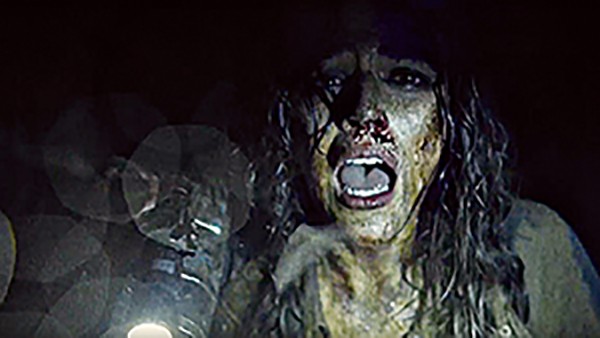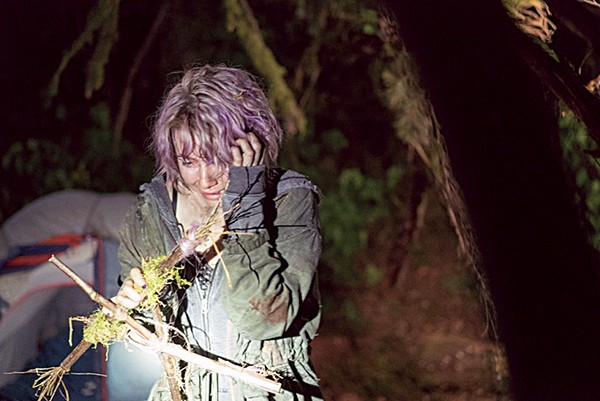It didn’t seem like it at the time, but The Blair Witch Project signaled a sea change in filmmaking. It was not shot by a professional cinematographer but, rather, by the actors themselves. They did not use 35 mm Technicolor film or even a handheld Bolex, like the French New Wavers had when they tried to democratize filmmaking back in the early 1960s. Instead, Daniel Myrick and Eduardo Sánchez used consumer-level digital camcorders, available at Best Buy or Walmart. The script was so minimal, the actors used their real names. Lead actress Heather Donahue was given two days of slapdash camera training before being set loose in the spooky-looking Appalachian woods to fend for herself.
And yet, somehow, it worked. The Blair Witch Project cost $60,000 (most of which was sound work) and returned almost $250 million at the box office, making it easily the most profitable movie of all time. It spawned a legion of imitators in the newly christened found-footage genre and inspired a generation of no-budget filmmakers who would apply the same improvisational techniques to other genres. Perhaps most importantly, it signaled the beginning of the digital age. Seventeen years later, digital projectors are the norm in theaters, and it’s considered newsworthy when a filmmaker decides to use actual film.
Adam Wingard is one of those filmmakers who grew up in the shadow of The Blair Witch Project. The prolific Tennessean (he was born in Oak Ridge) has close ties to the low-budget indie world. He worked in the found-footage horror genre in the anthology film V/H/S, and his biggest hit, You’re Next, echoes The Blair Witch Project‘s rural creepiness. While making the $5 million sequel Blair Witch, Wingard no doubt gave much thought to the question of why the original film became such a phenomenon. But the resulting film leaves the question as muddy as ever.

Corbin Reid (top) and Valorie Curry set out to find the fabled Blair Witch and found-footage gold.

The Blair Witch Project came on the cusp of the technological revolution that today is all around us. My phone and laptop both have better cameras than the ones Heather Donahue took into the Burkittsville, Maryland, woods. So it’s fitting that Heather’s younger brother James (James Allen McCune) is motivated to reopen the investigation into his sister’s disappearance when he sees a mysterious YouTube video that claims to be recovered from tapes found in the same woods where the Blair Witch resides. He sets off to meet the people who uploaded the footage, Lane (Wes Robinson) and Talia (Valorie Curry), accompanied by his friends Peter (Brandon Scott); Ashley (Corbin Reid); and Lisa (Callie Hernandez), a film student who plans to make a documentary called The Absence of Closure. Heather Donahue had a couple of now-primitive digital camcorders, but Lisa plans to bring the full arsenal of modern video devices to bear on the problem. She’s got a couple of expensive DSLR cameras, iPhones, body cams, and even a drone. If the Blair Witch is out there, or if Heather is still alive, by golly they’re going to capture it on a memory card.
Unfortunately for them, they do. The group finds their camping trip heading down the same path as Heather’s group, and by the time the creepy stick figures start appearing as they sleep in their camp, it’s already too late to survive.
Wingard and company give it their all. They take the shaky cam aesthetic of the original to its logical, head-mounted extreme. The transitions revel in blocky digital noise. As the situation deteriorates for our doomed campers, Wingard starts to throw in little homages to other classic horror films. When he embarks on a Close Encounters of the Third Kind detour, I was briefly convinced that the explanation for the disappearances would turn out to be aliens. From a conceptual and technical standpoint, Blair Witch is damn near flawless.
And yet, there’s a distinct lack of magic in this Blair Witch. Maybe like Jaws, The Blair Witch Project is a movie that can only work once. Thanks to the TV mockumentary The Curse of the Blair Witch, many people went into the original movie convinced the mystery was authentic. But in 2016, we’ve seen five Paranormal Activity sequels, so we know that just because it looks authentic doesn’t mean it is authentic. Blair Witch is a valiant effort to recreate the original’s alchemy, but it’s no substitute for the real thing. Whatever that is.